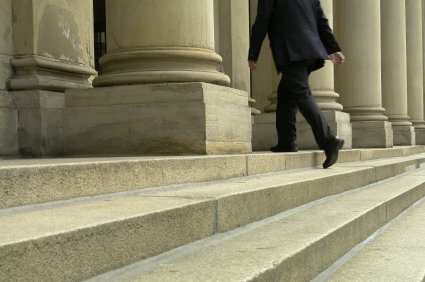Did California Medical Malpractice Cap Affect Doctors’ Recommendation to Remove Jahi’s Ventilator?

 The tragic case of 13-year-old Jahi McMath, whose post-tonsillectomy hemorrhaging ended in several doctors declaring her brain-dead, has highlighted complex ethical issues caused by a decades-old California law.
The tragic case of 13-year-old Jahi McMath, whose post-tonsillectomy hemorrhaging ended in several doctors declaring her brain-dead, has highlighted complex ethical issues caused by a decades-old California law.
A few facts are clear. In December 2013, doctors at Children’s Hospital Oakland removed Jahi’s tonsils and additional nose and throat tissue to treat the girl’s severe sleep apnea. Sometime after the surgery, Jahi began bleeding. Eventually she went into cardiac arrest and lost all brain function. A mechanical ventilator keeps her heart and lungs functioning, but doctors agree that she is brain-dead.
The hospital and its physicians have recommended removing Jahi from the ventilator. Along with many doctors, ethicists and lawyers, Children’s and its doctors assert that Jahi is medically and legally dead. Jahi’s family argues that hope for improvement remains as long as the girl’s heart and lungs are functioning. The family has retained a lawyer to explore their legal options.
Will California medical malpractice cap affect the case?
The family might pursue a medical malpractice case against the hospital, doctors and other medical personnel. Such a lawsuit would require the family to show that 1) Jahi’s doctors failed to provide her treatment that, under the same circumstances, another reasonably skillful physician would have provided; and 2) the substandard care caused Jahi’s injuries.
The third element of a medical malpractice lawsuit involves measuring the harm caused by the inadequate treatment. These damages may include both economic losses (principally lost wages and costs of future medical care necessitated by the malpractice) and non-economic losses, including pain and suffering caused by the mistreatment.
If Jahi survives, the McMath family could obtain compensation for the hundreds of thousands – if not millions — of dollars she would have earned in her lifetime, not to mention payment for her future medical treatment. And the McMaths could recover for Jahi’s and their own pain and suffering, which no doubt would be enormous under these circumstances. Damages might well reach many millions of dollars.
However, under a 1975 California law, if Jahi dies, her family’s recovery would be capped at $250,000. Even if she might have earned millions during her life, the hospital and doctors – and their insurance companies – would pay the family a maximum of $250,000.
The California legislature enacted the cap in 1975, citing claims that malpractice premiums were skyrocketing due to excessive malpractice damages awards, making it too costly for doctors to practice in the state. Limiting damages in certain cases would, doctors and insurers argued, help keep malpractice premiums affordable and prevent doctors from leaving the state to practice elsewhere.
Malpractice cap could influence Jahi’s treatment
This vast disparity in potential damages could affect the treatment decisions of Children’s Hospital Oakland and its physicians. If Jahi’s ventilator were removed, her heart and lungs would stop functioning and she would die. The hospital and doctors would face a maximum of $250,000 in damages in any malpractice lawsuit. However, if Jahi remains on the ventilator, she and her family potentially could recover millions of dollars in lost wages and future medical expenses, as well as for pain and suffering.
In short, the $250,000 cap gives the hospital a financial incentive to remove Jahi’s ventilator. Whatever the merits of the cap in 1975, clearly the legislature did not intend it to influence life or death treatment decisions nearly 40 years later.
Jahi’s family obtained a court order requiring Children’s to release Jahi to the coroner and then to the family. The girl was still connected to the ventilator. Whatever happens next, be it in a hospital or in a courtroom, the case points up the complicated medical, legal and ethical consequences of forty-year old medical malpractice laws.


